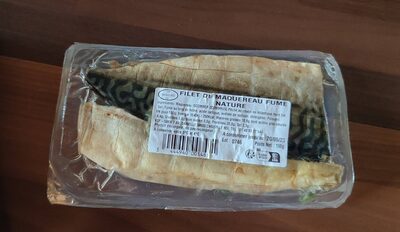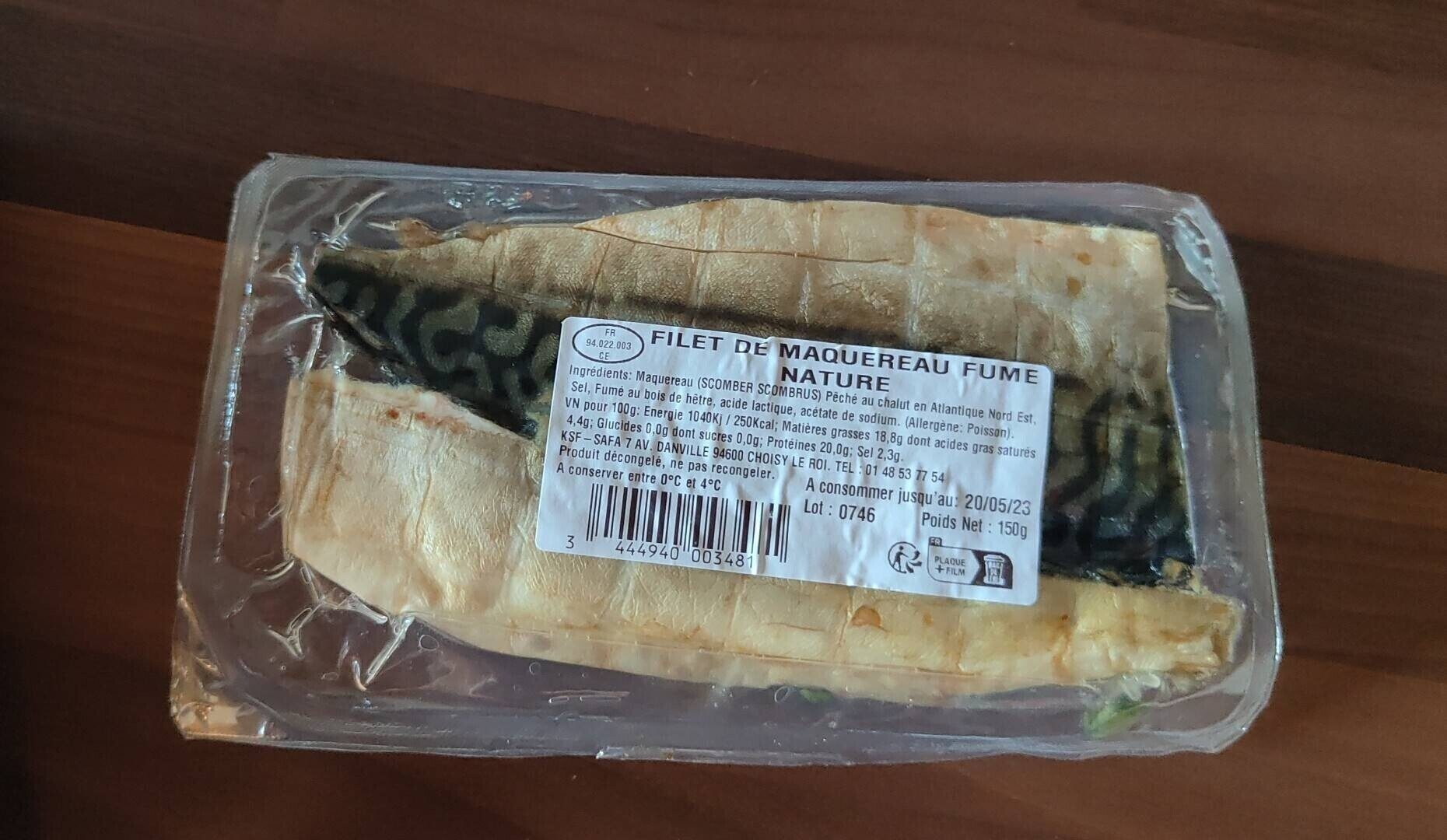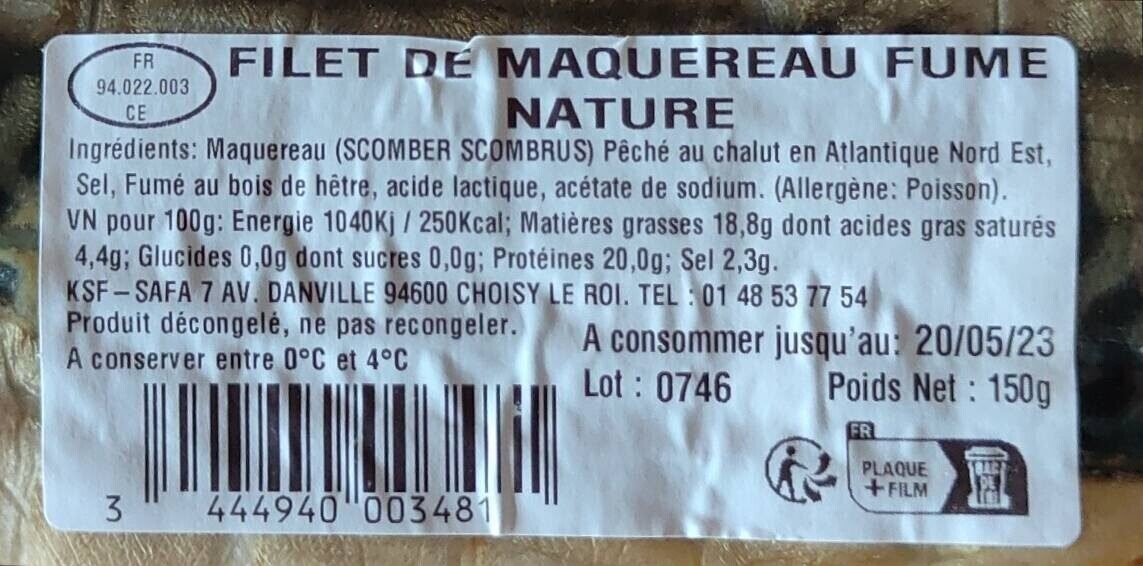Filet de maquereau fumé nature - King Sea Food - 150 g
This product page is not complete. You can help to complete it by editing it and adding more data from the photos we have, or by taking more photos using the app for Android or iPhone/iPad. Thank you!
×
Barcode: 3444940003481 (EAN / EAN-13)
Quantity: 150 g
Packaging: Vacuum-packed
Brands: King Sea Food
Categories: Seafood, Fishes and their products, Fishes, Fatty fishes, Fish fillets, Mackerels, Smoked fishes, Mackerel fillets, Smoked mackerels
Labels, certifications, awards:
Sustainable, Organic, Sustainable fishery, Kosher, Sustainable Seafood MSC, fr:100% filet, Triman

Origin of ingredients: Atlantic Ocean, North-East Atlantic Ocean
Manufacturing or processing places: choisi le roy
Traceability code: MSC-C-51675, FR 94.022.003 CE - Choisy-le-Roi (Val-de-Marne, France)
Countries where sold: France
Matching with your preferences
Environment
Carbon footprint
Packaging
Transportation
Labels
Report a problem
Data sources
Product added on by kiliweb
Last edit of product page on by teolemon.
Product page also edited by alinsu, chevalstar, dashkaly, openfoodfacts-contributors, packbot, quentinbrd, roboto-app, yuka.CO1JLNu1R9N6MsbTiqM4zBO6GevnLKdAH38UoQ, yuka.CrBmDNTRJ50DRd__96QpzSC6PsKxDN9QHU4WoQ, yuka.M7pnZsC7A_QAF8rXjoUu12WREtnSJtFDIS4oog, yuka.sY2b0xO6T85zoF3NwEKvlmtqT8KDmy_UMhP6glOa_fi2FpLtcfZo4riqYqo, yuka.sY2b0xO6T85zoF3NwEKvlnFnXOLnqDDiF0zvuUyLzOmTIsLuP8EtwqbECqs.












